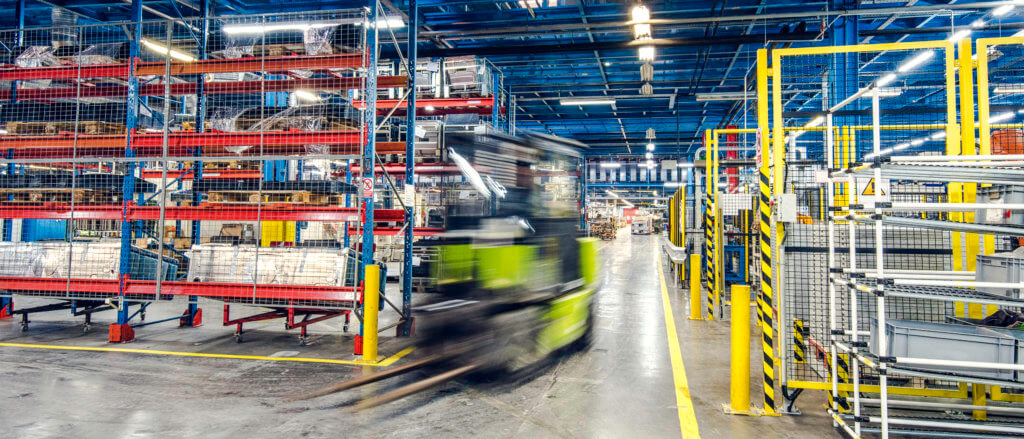
The imperative for driving productivity, throughput, and uptime strategies in the manufacturing sector has never been more urgent than during the COVID pandemic. How do you keep the manufacturing supply chain operational while optimizing costs? Can a digital transformation strategy with an intelligent edge infrastructure deliver better business outcomes through automating operations with AI? How can you leverage an extensible IP services network to scale and accelerate digital transformation strategies?
A specific example is the trend toward implementing “smart facilities” that constantly strive to find the right balance between autonomous digital processes and the necessity of human intervention, factored by the need to achieve digital innovation and speed-to-market agility.
In manufacturing, the key continuity phase of a high-performance manufacturing plant is being able to determine the real-time health status of the plant’s workers and adherence to overall hygiene protocols of the facility. However, in a viral pandemic, one of the main customer requirements is for a solution that is up to-the-minute capable of automating the way the health status of people entering the plant is verified, automating the capture of real-time analytics to determine the overall go-status of a specific plant, inter-connecting the micro-datacenters of each plant’s edge infrastructure, and converting that data into better, more tangible business value outcomes.
The potential risks to a failure in the continuity phase of a manufacturing plant operation during a viral pandemic include:
- Impacts to the health of all plant workers through social spread
- Disruption of operations and lost revenue
- Erosion of brand equity and shareholder value
- Lapsed protection of sensitive health and personal data
One practical solution is to implement a next generation architecture, that is an intelligent-edge infrastructure, with layered AIOps software at the wireless access points, that is capable of delivering a resilient solution for on-demand temperature readings and automated data entry at the point of transaction (plant entrances), while not having to store a medical record of each individual. An intelligent edge infrastructure in this case needs to be integrated with refined tools, workflows and processes already adopted, and flexible enough to enable services integration of third-party ecosystem solutions to accommodate additional use cases in subsequent rollout phases.
Such an intelligent edge infrastructure solution not only is capable of providing thermal detection, touchless entry and social distance tracking, but it also can help control potential virus spread by tracking an individual’s movements and identifying persons with whom they have been in contact. Real-time, video-based screening helps to identify individuals with elevated body temperature and sends alerts to plant operations and security staff, in addition to optimizing the video stream of gate entry events. A state-of-the-art smart facilities operation during a viral pandemic requires dedicated networking and security as the foundation of the intelligent edge infrastructure. The five key benefits to adopting an intelligent edge architecture are:
- Reduce Latency – faster time to insights, deterministic responses, no central datacenter or cloud roundtrips
- Security – retain data under organization control, compliance with restricted cloud usage rules, and minimize breaches of data in transit
- Innovation – obtain faster inferences including tapping local data sources that aren’t always available to the cloud
- Scale – expand automation and data mining without increasing Day 2 operations costs using IaaS to flexibly allocate networking, security, storage and compute services
- Resilience – run non-stop operations and a redundant edge infrastructure even during communication and cloud outages
Complex facilities with multiple entry gates and sizable workforces present a challenge to efficiently track and trace personnel if done in a conventional manner, that is, manual decision-making (green/red entry and data input), potentially slowing down operations and not capturing and benefiting from intelligent data analytics in real time. Another key element is the need to connect the intelligent edge infrastructures of dozens of other plants so that data can be aggregated and benchmarked for informing risk management models and operational excellence standards. The solution also requires a new technical architecture, going beyond legacy networks, that provides an intelligent edge infrastructure for open enterprise class IT in an OT (operational technology) environment.
The application of an intelligent edge solution is potentially everywhere businesses are converting data generated by IoT devices and operational technology into new operational efficiencies and revenue opportunities. Aruba’s Edge Services Platform (ESP), for example, addresses thousands of intelligent edge use cases including hyper-aware facilities such as buildings and factories, and the unique ability to facilitate dynamic segmentation for secure tunneling by specific IT/IOT/OT application.
Critical to dynamic segmentation is establishing a zero-trust perimeter that includes: identifying and securely managing the flow of sensitive data; continuous monitoring of data and events with security analytics; and security automation and orchestration via uniform policy control and management.
Smart facilities that use Aruba ESP IoT, OT and network-generated information, to assure performance of applications and infrastructure, are “hyper-aware” of the contextual status of the plant environment and the needs of its occupants in terms of services, security, and safety. Some of the major challenges that IT professionals are dealing with in the journey to network architecture modernization includes:
- Managing IT, IoT and OT networks in a converged infrastructure
- Accessing telemetry data in the proper context for a stronger data security posture
- Locating people and things, and helping people find their way, especially in an emergency
- Harvesting data and analytics from connected things, and converting them into tangible business outcomes
Transformation of legacy plant IT/OT operations to an Intelligent Edge Architecture is a way to deploy and run distributed, semi-autonomous IT systems to enable local, real-time data acquisition, analysis and action-taking. Unlike the centralized data center and Cloud Computing paradigms, the intelligent edge architecture works in concert with the cloud while eliminating the costs, latency and compliance issues caused by back-hauling data to a centralized data center or cloud by deploying compute, specialized applications, storage and networking resources to the edge of the network where data generated from people, devices and things can be analyzed and acted on in real-time.
Gartner cloud and edge computing analyst Thomas Bittman reported late last year that, “Accelerating bottom-line investments. Gartner actually saw an increase in inquiries for edge computing focused on bottom-line cost reduction and automation. This is especially true for edge projects that were already in progress. In some cases, the driving force was automation to reduce reliance on people, especially in remote locations, but also in manufacturing.” (How COVID-19 Changed the Future of Edge Computing,” Published 16 November 2020 - ID G00735340)
For more information about the benefits of an intelligent edge architecture like Aruba ESP, please visit https://connect.arubanetworks.com/ESP_Validation to learn more about your potential economic validation benefits by downloading a new market research report by the Enterprise Strategy Group.




